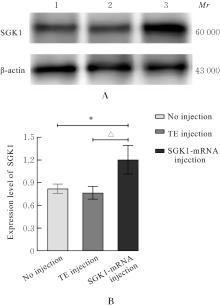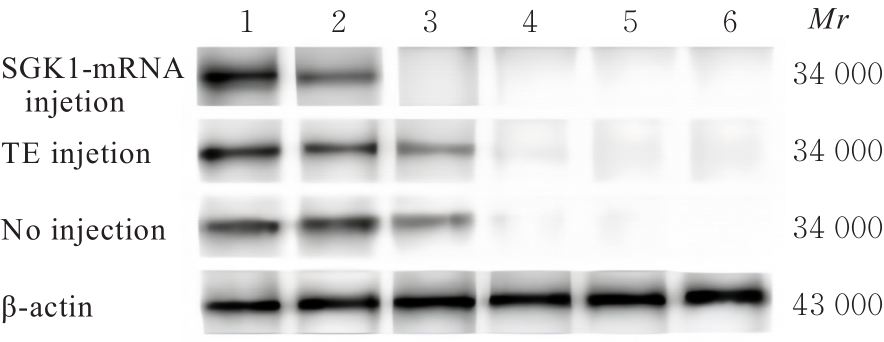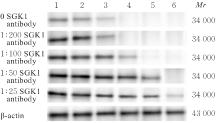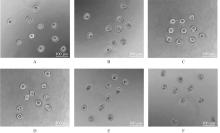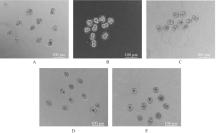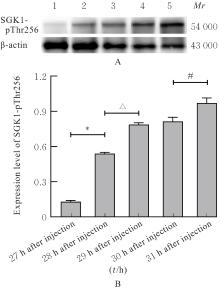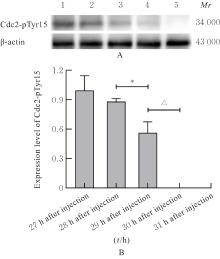| [1] |
Haiyao PANG,Li HOU,Wenning HE,Jun MENG.
Expression levels of serum and glucocorticoid-induced protein kinase 3 in one-cell stage fertilized eggs at different cell cycles in mice and its subcellular localization
[J]. Journal of Jilin University(Medicine Edition), 2023, 49(4): 884-889.
|
| [2] |
Sihan LAI,Juntong LIU,Luying TAN,Jinping LIU,Pingya LI.
Network pharmacology and molecular docking analysis on anti-ischemic stroke mechanism of Panax quinquefolium triolsaponins
[J]. Journal of Jilin University(Medicine Edition), 2023, 49(4): 913-922.
|
| [3] |
Yifei SUN,Dinuo LI,Yubin WANG.
Inhibitory effect of curcumin on proliferation and invasion of gastric cancer MGC-803 cells by down-regulating PI3K/Akt/mTOR signaling pathway protein expression
[J]. Journal of Jilin University(Medicine Edition), 2023, 49(2): 332-340.
|
| [4] |
Bingxue QI,Yangwei WANG,Yixian ZHANG,Jingbo ZHAO,Yan MA,Yadong SUN.
Ameliorative effect of liraglutide on renal function and podocyte injury of rats with diabetic nephropathy and its mechanism
[J]. Journal of Jilin University(Medicine Edition), 2022, 48(2): 331-339.
|
| [5] |
Chunxu LIU,Hongxia SUN,Bo HU,Enping JIANG.
Inhibitory effects of Schisandrin B on cardiac fibroblast proliferation and its PI3K/Akt/P27kip1 signaling pathway mechanism
[J]. Journal of Jilin University(Medicine Edition), 2022, 48(1): 52-58.
|
| [6] |
Jingjing MA,Yu LIU,Yan LIANG,Ying LI.
Promotion effect of total alkaloids of leonurus on decidual villus excretion in drug abortion rats and its mechanism
[J]. Journal of Jilin University(Medicine Edition), 2021, 47(6): 1476-1484.
|
| [7] |
Xiaolei XU,Yukun YANG,Zhongming LI,Xinyue LI,Ying WANG,Jie SHENG,Jing ZHANG,Xiuling SUN,Hongyan WANG,Li QU,Huan LI.
Improvement effect of ginsenoside Rg3 on reproductive function injury induced by dibutyl phthalate in mice and its mechanism
[J]. Journal of Jilin University(Medicine Edition), 2021, 47(6): 1429-1436.
|
| [8] |
Nuan WANG,Lijuan YANG,Juanjuan DAI,Aili WANG,Yan WU,Chengxia LIU.
Promotion effects of MARCH1 on migration and invasion of human gastric cancer cells through PI3K/AKT signaling pathway
[J]. Journal of Jilin University(Medicine Edition), 2021, 47(2): 352-359.
|
| [9] |
Bingxue QI,Yan MA,Yixian ZHANG,Yadong SUN,Lining MIAO.
Effect of liraglutide on expressions of mRNA and protein of related proteins after podocyte injury induced by high glucose and its mechanism
[J]. Journal of Jilin University(Medicine Edition), 2021, 47(2): 275-283.
|
| [10] |
LIU Lanqing, LI Ruilin, ZHOU Xiaomin, MENG Jun.
Dynamic expression and localization of CDC14B in each cell cycle of mouse one-cell fertilized eggs
[J]. Journal of Jilin University(Medicine Edition), 2020, 46(04): 675-679.
|
| [11] |
DU Jinghai, CHEN Chunyou, GUO Xin, ZHANG Jing.
Effects of silencing Kat5 gene on proliferation and apoptosis of thyroid papillary carcinoma cells
[J]. Journal of Jilin University(Medicine Edition), 2020, 46(03): 543-550.
|
| [12] |
LI Cai, WEI Jie, ZHEN Yongzhan, DAI Minghe, HU Gang, GUO Lixin, LIN Yajun.
Improvement effect of rhein lysinate on insulin resistance of KK/HlJ diabetic mice and its mechanism
[J]. Journal of Jilin University Medicine Edition, 2017, 43(06): 1074-1079.
|
| [13] |
LIU Chao, REN Lili, LUAN Zhidong, MENG Zhichao, LIU Yimeng, XIAO Jianying.
Screening of candidate molecules interacting with protein kinase Wee1B from human ovary cDNA library and its regulation effect
[J]. Journal of Jilin University Medicine Edition, 2016, 42(05): 866-871.
|
| [14] |
DENG Wang,ZHAO Yan,HE Jing,WANG Dao-xin.
Regulation of insulin in expression of alveolar epithelial sodium channel β subunit by PI3K signaling pathway
[J]. Journal of Jilin University Medicine Edition, 2014, 40(02): 233-237.
|
| [15] |
YU Wei-xian,WANG Wen-tian,LIU Xin-chan,ZHANG Yu-feng.
Thermostability of GTPase activity of cell division protein FtsZ in Porphyromonas gingivalis
[J]. J4, 2012, 38(3): 551-554.
|
 )
)
